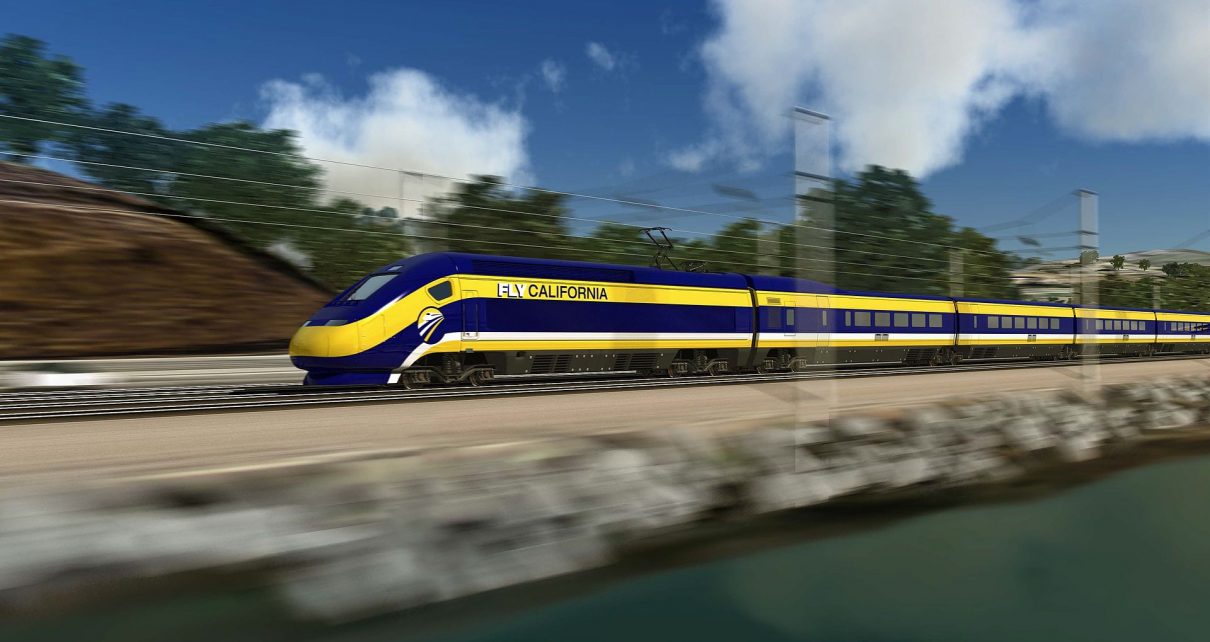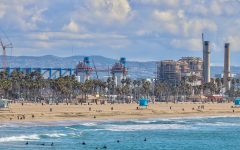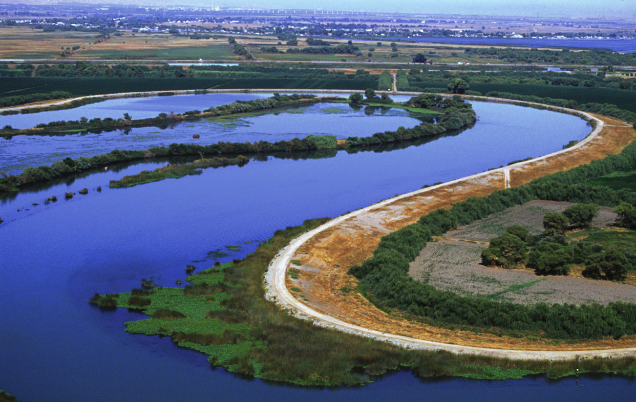
High Speed Rail train, artists rendering. (Photo: CHSRA.ca.gov)
Tunnel Vision: When Stupid Drifts into Ludicrous
So, how many state officials does it take to build a train?
By Thomas Buckley, May 26, 2024 4:04 pm
You have to hand it to the California High Speed Rail Authority – they just never stop, do they?
As noted in this California Globe piece Friday, the rail folks are trying to get the last little bit (don’t hold your breath San Diego or Sacramento) of the colossally stupid LA to SF rail project through the environmental approval process next month.
This is the bit that will run from Palmdale to Burbank and faces a number of, um, challenges from the largely negative public reaction to the actual building of the tracks.
That’s because it is quite possible that nearly the entire 28 mile stretch will be underground, you know, a tunnel or two or three through the mountains.
I’ll let you have a giggle and a swig of whatever you happen to be drinking and then continue.
There.
People build tunnels all the time? So what’s the problem?
First, the geography. The tunnel(s) will have to traverse faults lines under and in the San Gabriel Mountains through which it will pass. Faults and tunnels are not good friends because one little oopsyquake can shift the tracks out of alignment, crack the tunnel itself, or even just collapse the whole thing.
Second, there is the cost. The proposed tunnel(s) would be amongst the longest in the world – let’s compare, shall we?
- Gotthard Base Tunnel: This runs under the Alps for about 35 miles connecting Switzerland and Italy. It cost, in today’s dollars (as will all of the financials be) about $18 billion dollars and took 20 years to build. Both of those figures are somewhere in the region of double initial estimates so California’s high speed rail folks should feel right at home.
- Seikan Tunnel: This is a 33 mile tunnel, with about 15 miles under the ocean, connecting Hokkaido Island with the rest of the Japan’s high speed rail network. It cost about $22 billion and took a very long time to build. The original surveying was done in 1946, construction began in 1971 and it was finished in 1998.
- Channel Tunnel: Better known as the Chunnel, this 31 mile answer to a question that was first asked by Napoleon in 1802, also went way over time and way overbudget, costing, like the Seikan, about $22 billion.
- Yulhyeon Tunnel: Another high speed rail tunnel. The tunnel runs south from Seoul, Korea south for about 31 miles and cost about $12 billion. However, since opening in 2016 the tunnel – which traverses one of the country’s biggest and nastiest fault lines – has been plagued by problems caused by poor surveying, slipshod construction, and crummy project oversight. Again, California’s high speed rail folks should feel right at home.
Depending on exactly how it will be measured, the PalmBank (BurDale?) tunnel could find itself at fifth on the list of world’s longest tunnels; at the very least it will be in the top ten.
In other words, this one little bit of the project will, by definition, be one of the biggest construction projects in the world.
We’re talking Hoover Dam, Pyramids type-stuff here and, considering the high speed rail authority’s track record (sorry, couldn’t resist,) they are guaranteed to utterly botch the whole thing.
“Yeah, Bill? A pyramid isn’t supposed to be round.”
“Oooohh…”
So comparing the per mile costs of between $400 and $650 million of the other tunnels – yes, they each have their own issues and features so this is not exact – you end up with about $550 million per mile for PalmBank, or about $16 billion – AT LEAST.
By the way, that’s $8.700 per inch.
Think about those numbers. Remember when the entire 840 mile project was supposed to cost $33 billion and connect LA and SF and SD and SacTown and points in between?
It turns out that just that 28 mile segment – about 3% of the entire promised distance – will be taking up HALF that amount.
Oh, by the way, the original backers knew exactly what the whole thing was really going to cost and how late it would be when they asked for your vote.
Factor in high speed rail incompetence and if…yeah, right…it gets built, the time delays and cost will be mind boggling. Speaking of time, the other tunnels took on average about 18 years to build, so the projected 2035 debut of a completed LA to SF track will be, um, delayed…again.
So, how many state officials does it take to build a train? Zero, because no one knows how to do it.
Thanks for reading the Globe!





Here is a good one on nuclear escape tunnel that they partially built in the 1950’s to get from Los Angeles to the desert. https://www.youtube.com/watch?v=QEbW8KF7HOU Tunnels have been a fascination for several generations now.
Another outstanding article
California already built two long tunnels through mountains like that in SoCal: The SanJac tunnel, and the inland feeders, both engineering marvels. This is a great project because it fixes the missing link in the state’s rail system.
the sanjac is shorter, simpler, and still turned out to be a leaky mess.
that’s not exactly a great track record…
Of course the projects you cite as comparisons are fantastically worthwhile – No-one in the UK regrets the Chunnel. If a country like Spain with an economy smaller than California can have fast trains connecting 20 cities (!) https://www.thetrainline.com/trains/spain/map and which make travel in that country an absolute joy (try it) surely we can link the two great centers of this state
somehow we’re the best country in the world but then when it comes to ambitious projects, we shouldn’t do them because then they’d be the best in the world?
well ok! sure.
Explain the total failure to get any portion of this train operational in the 16 years since the project has been approved?
They picked the most ludicrous path for the train in order to maximize the opportunities for graft. This is how you make a 100 billion dollar project a 200 billion dollar catastrophe.
“if you can’t afford to drive, please migrate out of California” says the author.
Yup, as about as well informed an article as I expected.
i.e. not at all. 😛